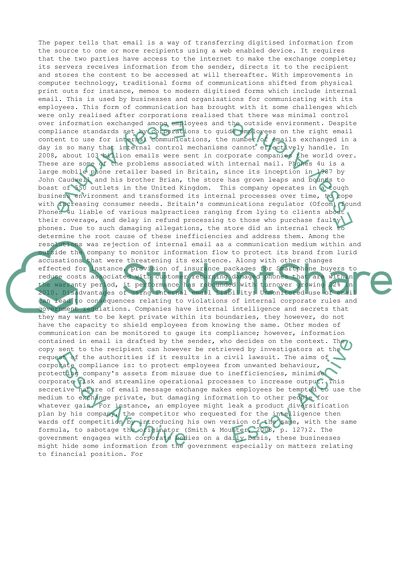Cite this document
(“E-mail as way of communication in business Essay”, n.d.)
Retrieved from https://studentshare.org/management/1396374-management
Retrieved from https://studentshare.org/management/1396374-management
(E-Mail As Way of Communication in Business Essay)
https://studentshare.org/management/1396374-management.
https://studentshare.org/management/1396374-management.
“E-Mail As Way of Communication in Business Essay”, n.d. https://studentshare.org/management/1396374-management.


